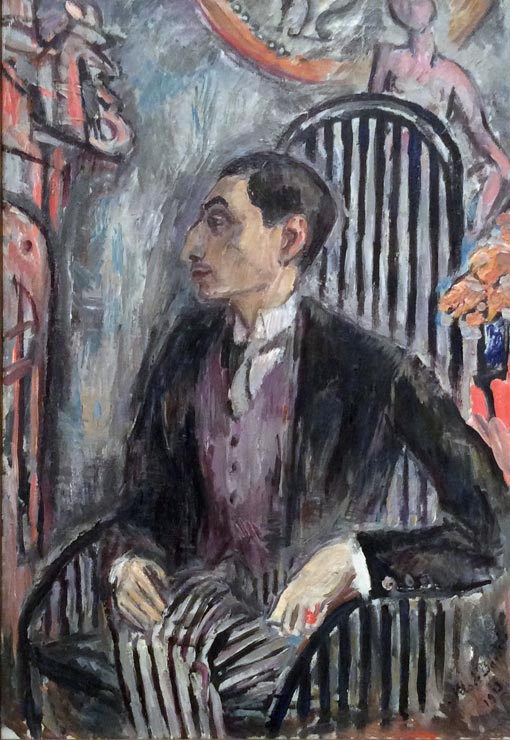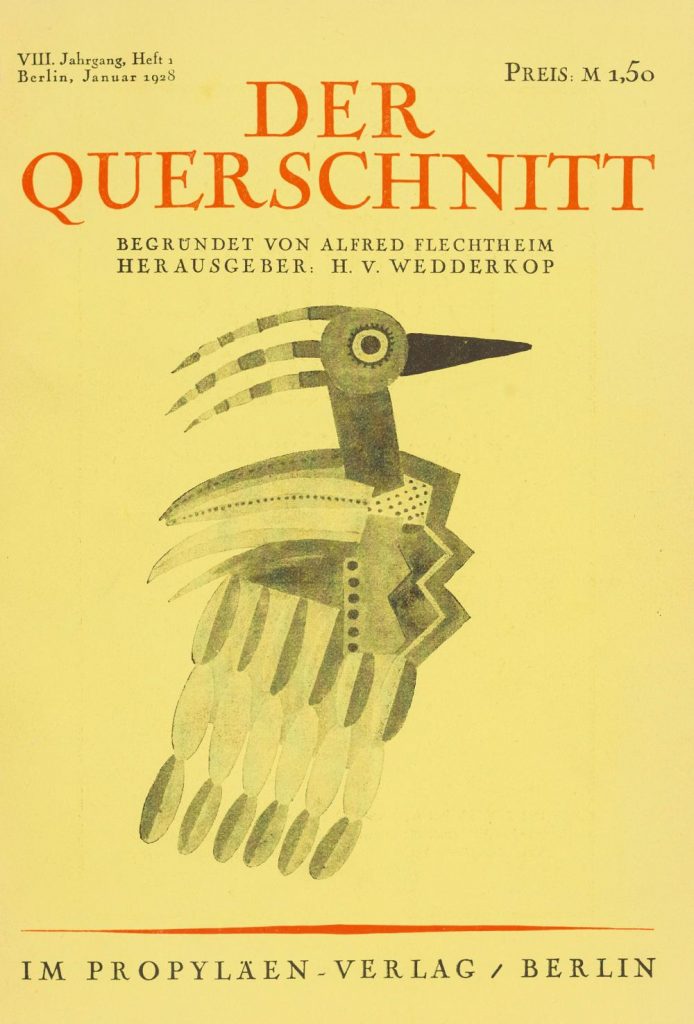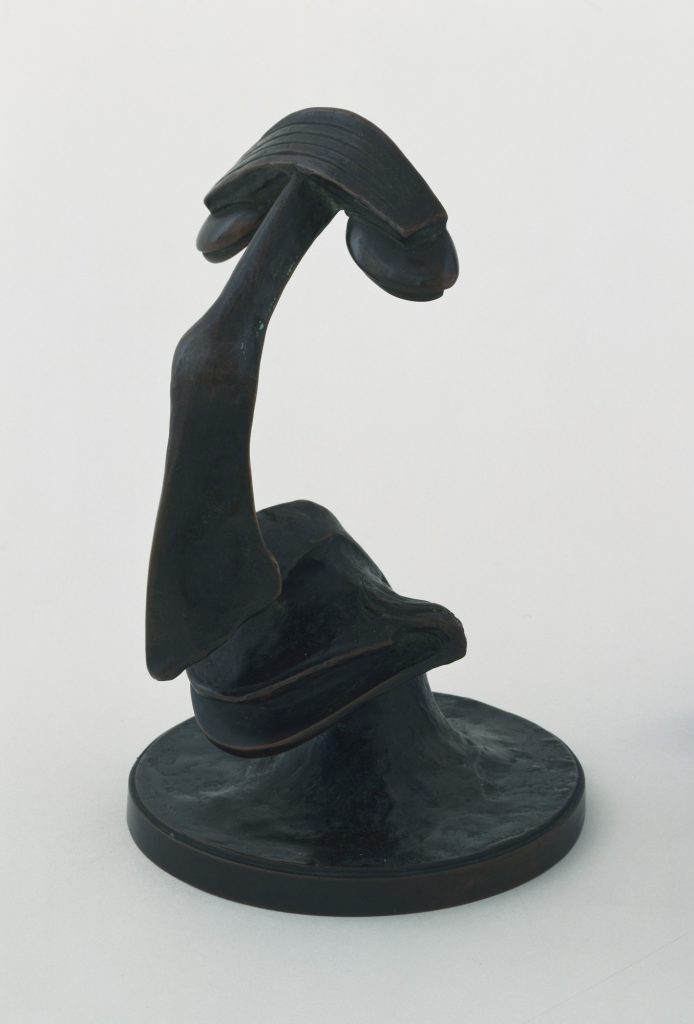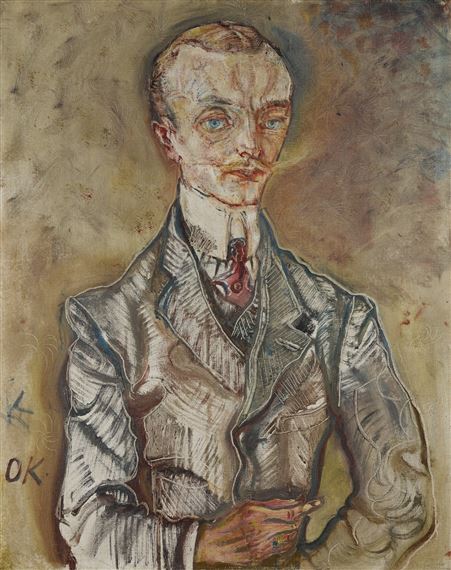This post isn’t about an artist but a gallery owner, Alfred Flechtheim. He was born in Münster, Germany. His father, Emil Flechtheim, was a grain dealer and for a time Alfred worked in his father’s offices in Germany and France. Aged 22 in 1900 he was buying art, with a collection of paintings by Vincent van Gogh, Paul Cézanne; French Avant garde early works of Pablo Picasso, Georges Braque and André Derain; paintings of Wassily Kandinsky, Maurice de Vlaminck, Alexej von Jawlensky, Gabriele Münter, and the Rhein Expressionists Heinrich Campendonk, August Macke, Heinrich Nauen, and Paul Adolf Seehaus.

Nils Dardel – Alfred Flechtheim, 1913
Flechtheim opened his first gallery in Düsseldorf in 1913, followed by galleries in Berlin, Frankfurt, Cologne, and Vienna, however when the First World War started there was no market for buying art and his business closed. He re-opened in Düsseldorf in 1919. He went into the swinging twenties with style and became known for his glamorous parties with the glitterati of the new Berlin: movie stars, titans of finance, prizefighters and artists. All the people you need to run a good art gallery.
He founded the modernist art journal Der Querschnitt (The Cross Section) which ran from 1921 until 1936.

As the thirties rolled on Flechtheim found himself more out of step with the rising Nazi party, being Jewish for one didn’t help, being a successful Jewish man also had him on the Nazi’s radar, but the biggest affront to the party was the art he promoted and sold.
In 1922 he hired Alexander Vömel. When Flechtheim moved to Berlin, he entrusted the Düsseldorf gallery to Alex Vömel, and in 1926 he appointed him managing director. They survived the stock market crash of 1929. In 1933, men from the Sturmabteilung (precursor to the SS, the Brown Shirts) matched into an auction of Flechtheim’s paintings and stopped proceedings. Vömel (also a Sturmabteilung member), confiscated Flechtheim’s Düsseldorf gallery stock. After the war, former party member Vömel said he didn’t even remember who Flechtheim was. The Nazis seized and sold off Flechtheim’s private collection, as well as the contents of his gallery. In the same month Flechtheim fled via Switzerland. Six months after the Nazis came to power in 1933, Flechtheim, penniless, fled to Paris, and tried to find work with his former business partner, Daniel-Henry Kahnweiler. Flechtheim subsequently organized exhibits in London of the paintings of exiled German artists.
“I lost all my money and all my pictures.”
By November 1936, another of Flechtheim’s former gallery assistants, Curt Valentin, had made a deal with the Nazis that would allow him to emigrate to New York and to sell “degenerate art” to help fund the Nazi war effort. In January 1937, with financing from Buchholz, Valentin left for New York and set up the Karl Buchholz Gallery at 3 West 46th Street which was later accused of serving as a conduit for bringing Nazi looted art, including paintings that had been seized from Flechtheim, into America.
In March 1937 in London, Flechtheim slipped on a patch of ice, was taken to a hospital, punctured his leg on a rusty nail in his hospital bed, developed sepsis leading to amputation of his leg, and died. Flechtheim’s attempts to gain a foothold as an art dealer in exile failed; he died impoverished in London on March 9, 1937. Flechtheim was cremated in Golders Green, his ashes are in plot 4062A.

Rudolf Belling – Alfred Flechtheim, 1927
Flechtheim married Betty Goldschmidt, a wealthy Dortmund merchant’s daughter. On a honeymoon trip to Paris, Flechtheim invested Betty’s dowry in cubist art, to the horror of his inlaws. The marriage was childless. Betty Flechtheim was with her husband in London during his final days. Then she returned to Berlin. In 1941, when she was ordered to report for deportation to Minsk, she ingested a lethal dose of Veronal. The Gestapo seized her art collection.
Flechtheim’s heirs are attempting to recover artworks stolen from Flechtheim. These works reside in German museums and the Museum of Modern Art.
Oskar Kokoschka’s “Joseph de Montesquiou-Fezensac” (1910) was sold by Alex Vömel to the National Museum of Fine Arts in Stockholm where it would later be transferred to the Moderna Museet. It remained in the Moderna Museet’s collection until 2018, when it was restituted to Flechtheim’s heirs. In November 2018, it sold at Sotheby’s for $20,395,200 (including fees).

Oskar Kokoschka – Joseph de Montesquiou-Fezensac, 1910